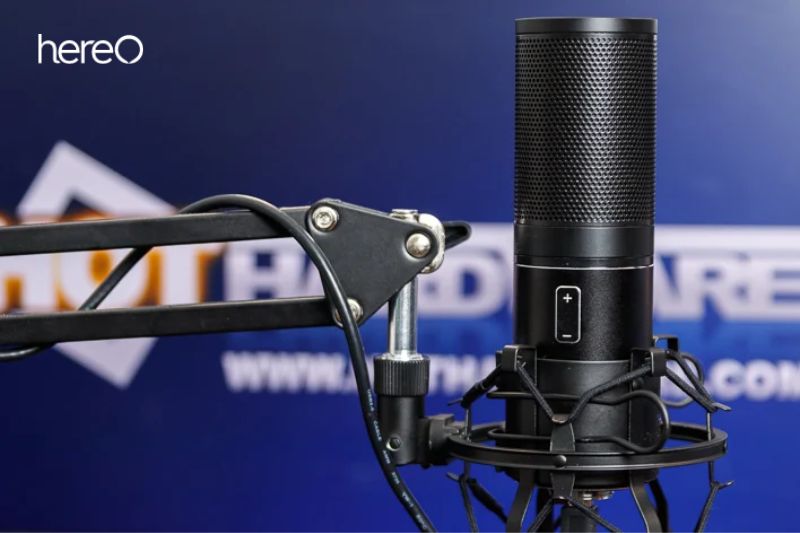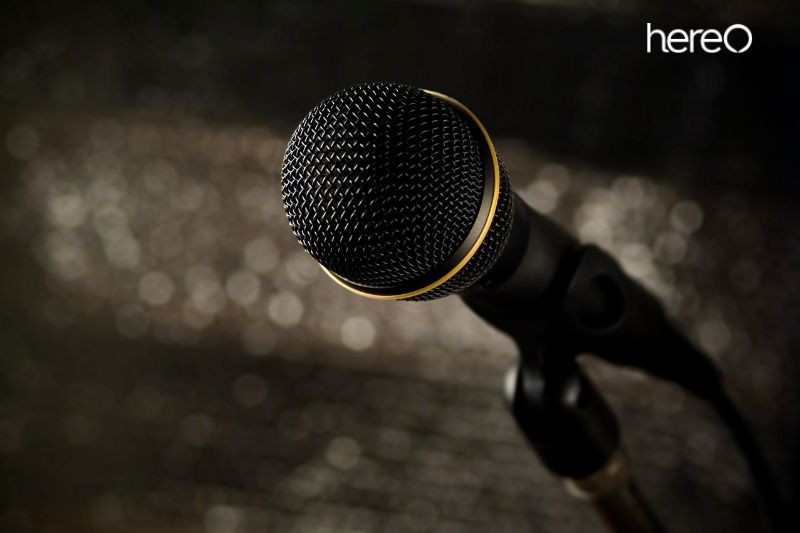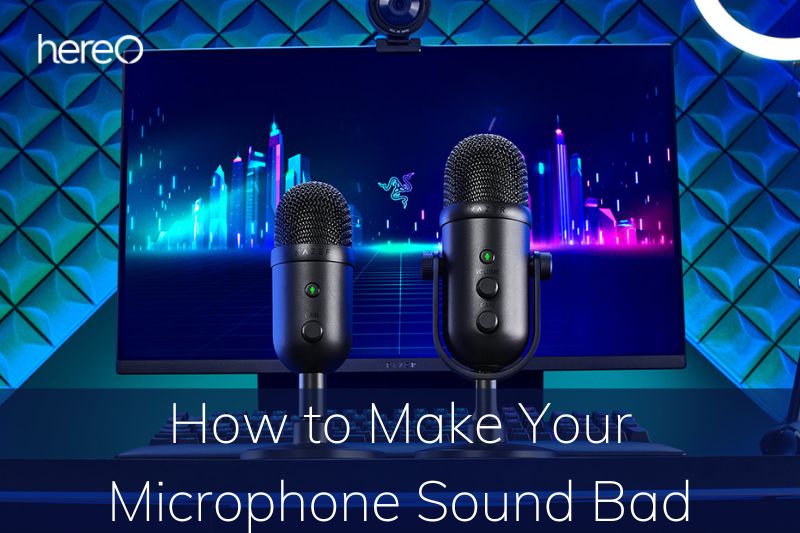Everyone is rushing to produce high-quality audio. You might want to make it sound horrible at points in order to finish your album. There are instances where you can specialize in terrible quality to good quality in reverse. In this article, we will discuss how to make your microphone sound bad.
Contents
Why Make Your Mic Sound Bad

Making your microphone sound bad can be a great way to add some character and creativity to your recordings. It can also be used to achieve a particular sound, such as a lo-fi or distorted effect, or to reduce the clarity of your recordings, making them sound less polished and more raw.
Fortunately, making your microphone sound bad is relatively easy to do and requires minimal equipment. With just a few simple tweaks, you can turn a regular sounding microphone into one with a distinct and interesting sound.
How to Make Your Microphone Sound Bad

Be too close or too far from the mic.
When the microphone is too close to you, the sound quality suffers. Until your mouth hits the microphone, get there. Add your spittle or inane noises, then exhale deeply.
If the gain is excessively high, on the other hand, when recording close to the mic, the loudness increases to its maximum and results in sound coloration.
If you have an amplifier, you can crank up the gain to make incredibly loud, low-quality noises, or you can edit later.
Another way to experiment with a microphone is from a distance. It is especially useful in a chaotic or noisy environment or when an air conditioner is making noise.
To produce extremely realistic and authentic crowd noises that degrade the mic quality, using a mic from a distance is really helpful.
Breathe into the microphone
You may have heard how terrible audio sounds when it is recorded outside in a windy atmosphere. You may get a similar level of poor audio quality by recording outside, or you can also breathe heavily into the diaphragm.
Any air from your mouth will produce significant distortions since the microphone is sensitive to the air that hits the diaphragm.
Introduce background noise
The likelihood that a microphone will take up noise when used in a busy, noisy area is considerable. Most microphones without built-in noise-canceling technology are affected by this.
In very sensitive microphones, it’s even worse. Your voice can be drowned out by background noise.
Use the wrong power source.
Did you know that one of the most fussy electrical gadgets is the microphone? No matter how good or costly the model, the audio quality will be poor if the wrong power supply is used. Start by avoiding utilizing the microphone’s included cable.
It is sometimes sufficient to use equipment that is not made by the manufacturer. It’s also quite effective to fiddle with the XLP power lines, but be careful not to cause any lasting harm (unless you want to).
The most susceptible to these modifications are microphones with phantom power, or those that have active electronic circuitry. You can ruin the sound of your microphone in one simple step if you are aware of the recommended power source.
Mess with the EQ

The microphone on most smartphones doesn’t have an equalization. That will probably be included with other software, such as the recording studio or the program that goes with the microphone.
An equalizer for recording purposes is slightly different from one you’ve previously used to configure speakers and headphones. But if you could understand that, you’d figure this one out very quickly.
The next step is to experiment and see which parameters result in the poorest results.
Have bad connection.
Both a bad power source and a shoddy connection to your system are issues. I have a microphone that I can connect to without fully plugging it in. Naturally, if there is a significant wind in that direction, the jack will fall out, but the microphone continues to work.
Operational doesn’t mean amazing sound. In fact, if I don’t secure the jack properly, the playback actually sounds like it’s coming from the bottom of a well. Similar principles apply when damaging cables.
Bluetooth is the most fiddly connection. It’s already not the best choice if you’re looking for perfection, and it doesn’t take much to make matters worse.
The first choice is to place a barrier between your microphone and the recording equipment. Any metal product is a wise choice. If you can leave the room and have a full wall acting as a barrier, that’s even better.
The connection can then be overloaded next. Turn on everything that you can link to your recording device through Bluetooth. Lastly, remove all updates. Poor audio quality is likely to be caused by outdated firmware.
Diaphragm Size
The microphone’s diaphragm size serves as a link between the production of sound and mechanical data. The microphone’s middle top is where the thin membrane is positioned. If you’ve ever cracked the microphone or opened it to look inside, you’ve probably noticed a little drum-like shape.
Mics with a small-diaphragm condenser are 1/2′′ (12.7 mm) or smaller in size. Therefore, if you choose a small diaphragm size, the microphone will sound terrible.
How to Make Microphone Sound Bad on Purpose During Meetings?

If you want to make your microphone sound bad on purpose during meetings, there are a few steps you can take.
First, use a low-quality microphone. Cheap microphones often produce poor sound quality and can make your recordings sound bad on purpose.
Second, make sure you are speaking too close or too far away from the microphone. If you’re speaking too close, your audio will sound distorted and muffled. If you’re too far away, your audio will sound faint and weak.
Third, keep background noise source. Background noise will make it difficult for people to hear your voice clearly, making your audio sound bad.
Finally, turn down the volume on your microphone. The lower the volume, the worse the sound quality will be.
FAQs about How to Make Your Microphone Sound Bad

How do I make my mic extremely loud?
To make your mic extremely loud, you need to increase the gain or volume. This will cause the microphone to distort, resulting in an unpleasant sound. Additionally, you should not place the microphone too close to the sound source. This can create feedback and further distortion.
How can I purposefully worsen the quality of my mic and camera?
If you want to make your microphone sound bad, there are several ways you can take to achieve this. The first step is to reduce the amount of gain it has. You can do this by turning down the volume or reducing the sensitivity of your mic. Another way to make your microphone sound bad is to increase the background noise. This will result in a muffled or distorted sound.
When using a camera, you can also purposefully worsen the quality by setting the exposure too high or low, or by shooting in a low-light environment. Finally, if you want to make your microphone sound even worse, you can try placing it in an area with a lot of echo or reverberation.
Conclusion
No matter what type of audio you are creating, it is important to remember that there are times when bad quality audio is preferable. So, go out there and create something unique! Don’t forget to share your creations with the world, we can’t wait to hear what you come up with!
Thank you for reading! HereOfamily hope you enjoy reading.
